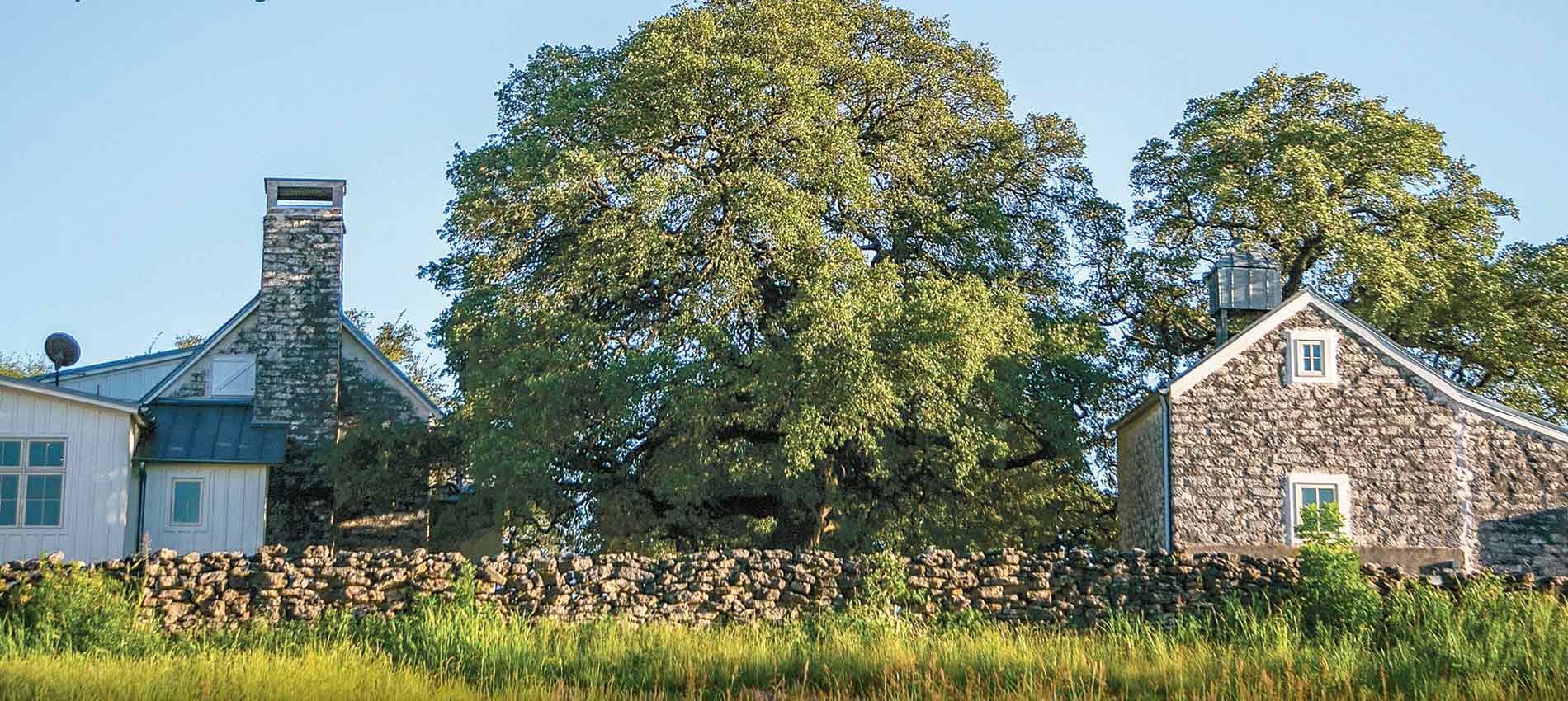Anyone who’s ever owned an old house wishes those walls could talk.
At one historic farmstead in Bosque County, in Central Texas, recent renovations revealed one wall’s secrets when out fell a piece of wood carved with the date 1858.
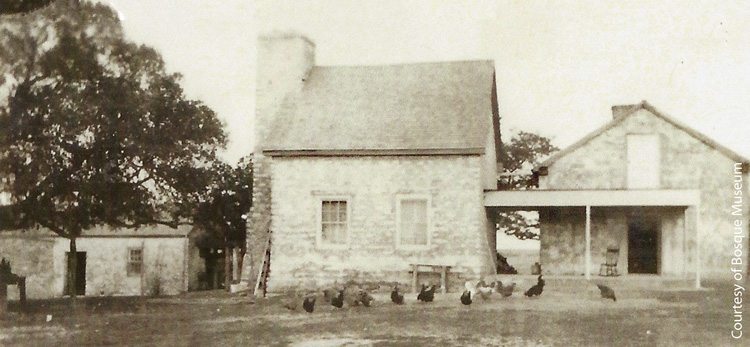
It was the latest clue to the past at the Carl and Sedsel Questad Farm, a property on the National Register of Historic Places that has changed little since it was built by Norwegian pioneers. In addition to farming and raising a family, the Questads made lasting contributions to history by sending Texas artifacts to museums around the world, sharing their home with a pioneering entomologist, and helping to establish the largest Norwegian colony west of the Mississippi River.
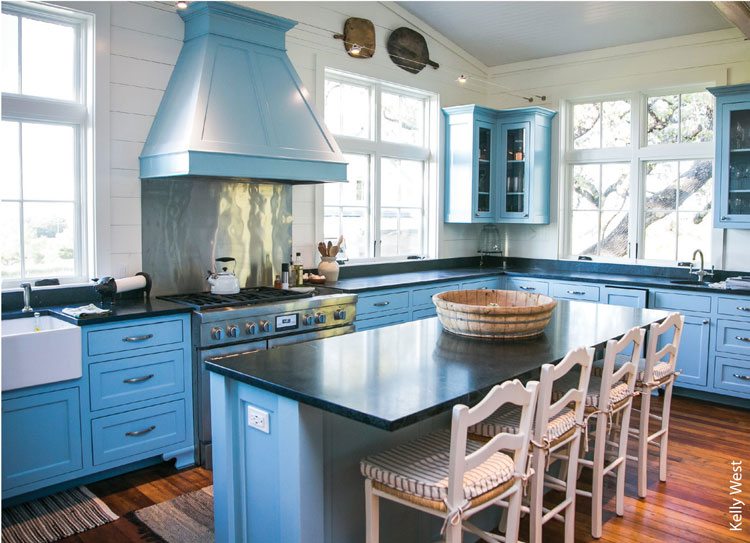
The 150-year-old stone walls, hand-hewn beams and wrought-iron latches in the stone house and outbuildings still bear the craftsmanship and European style of its original owners. The farmstead’s largely original condition was also an advantage for preservation.
Seeing Questad Place for the first time was an emotional experience for Dallas preservation architect Stephen Chambers and his wife, interior designer Stephanie Chambers.
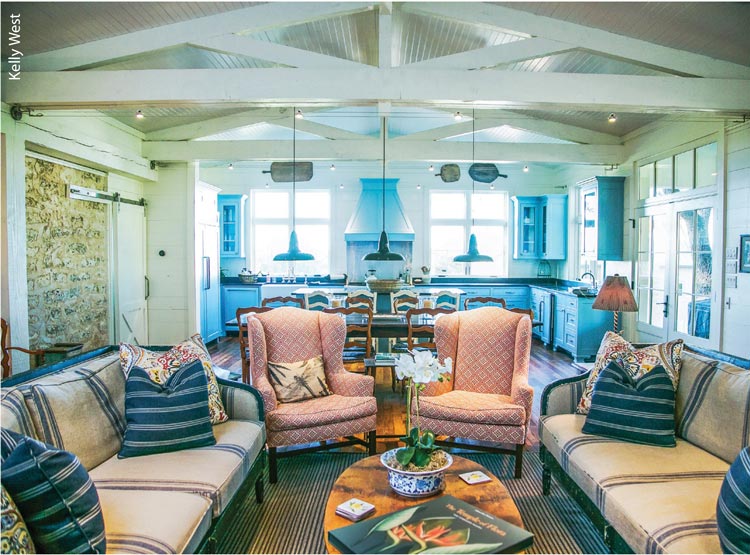
“It was stunning,” Chambers says. “Often you see a little piece of what was left and think, gosh, what did this used to be? In this case, no one had damaged the history by demolishing, disassembling or covering up the original structures. That made restoring it so much easier.”
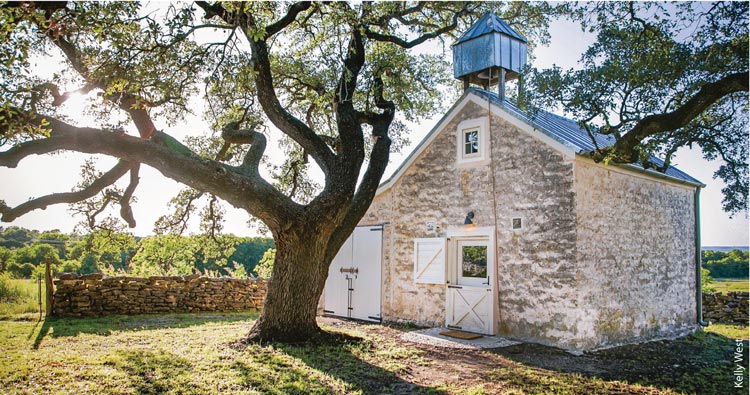
Chambers and the owners—who have already enjoyed the home for 30 years and learned about its past from historians, books and the Questads’ descendants—were careful to protect the original farmstead when they added new rooms, climate control and other modern amenities. The result is a more livable home that will have stories to tell for many generations to come.
The owners and their architect share these 10 tips for renovating a historic home.
Maintenance matters
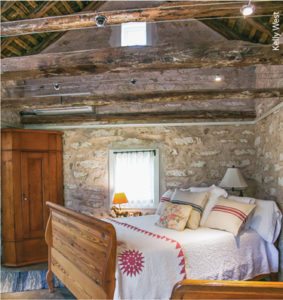
Buildings that have been maintained but not altered are some of the best candidates for preservation. Questad Place is one of the few farmsteads of its kind left because occupants fixed leaks and tended to the stone walls.
“It’s almost like the house has something to tell you about what was there before, who was there and how they lived their lives,” Chambers says. “You can’t see the original history after something has been demolished or covered up.”
Research the home’s history
Gather old photos and as much information as you can from past owners, historical societies and other sources. The home’s historic significance, age locale, building materials and cultural heritage will influence choices down to the smallest details.
Find the right rerson for the job
Questad Place’s owners looked for an architect and building contractor who had an appreciation for old buildings and experience with property similar to theirs.
“Look at the architect’s portfolio, and see if you like the end result and whether it preserved enough of the history for what you’re trying to accomplish,” says Chambers, who has restored historic ranches, log cabins and other old homes in Texas and Oklahoma. “Go see some of the other historic projects they’ve done, and talk to clients to get and idea about credentials and experience.”
Choose a sensitive contractor
Find a building contractor who respects history and craftsmanship. “I have been amazed at the quality, experience and sensitivity of contractors in rural areas,” Chambers says. “We’ve found some who work more with their hands and have a feel for the history. They may have been exposed to more historic preservation because they see it all the time.”
Understand the cost
Weigh the expense of restoration against the building’s historic, personal and resale value.
“People who want to be stewards of history kind of have to go the extra mile,” Chambers says. “Its usually takes more time, effort, thought and money than just going out and building a new building. Going past a certain point may not make economic sense, but the client’s love of the built historic environment can outweigh this.”
Make a list of priorities
To renovate Questad Place cost-effectively, the family whittled down its wish list to the most important things, including a roomy living area, kitchen and bathrooms.
“I think a lot of times people underestimate the cost,” the owner says. “Bathrooms require a lot of plumbing, wiring and building. Be careful with your budget, and if something you want to do is going to get you out of whack, it can wait.”
Decide how much to modernize
One way to preserve the past without sacrificing modern comforts is to add on. At Questad Place, the owners avoided disturbing the 2 1/2-foot-thick stone walls and built new additions for most rooms that required plumbing. Central heat and air-conditioning are limited to the main house, which has attics that can conceal the ducts, while ductless mini-split systems are used in the outbuildings.
“There’s a balance to restoring something so that you can see the history and still have comfortable living conditions,” Chambers says. “It takes a discussion. The very best work is done when the clients, architect and builder collaborate to get the results everybody is looking for.”
Expect the unexpected
Plan for contingencies in the contract, and consider budgeting an extra 5 percent.
“There are two things that tend to develop,” Chambers says. “One is something I call job betterment. You’re only going to do this once, so for this one thing you might decide it’s worth spending a little more.
“The other is the unexpected. Even though the architect has thought this through and the contractor has done a great job of bidding it, things come up on a historic building that no one would have foreseen.”
Think long-term
Although improvements are more economical when they’re part of a big project than when they’re done piecemeal, there’s always a to-do list at an old house.
“It’s not always possible to do everything at once,” the owner says. “Do what you can, enjoy it, and once you’re ready, add to it.”
Find a good lender
For many lenders, rural home loans and improvement loans are outside the norm. Some also have a hard time appraising the value when there aren’t many comparable properties that are rural or historic.
Farm Credit lending cooperatives, on the other hand, specialize in financing and appraisals for agriculture and rural property. The advantages of Farm Credit improvement loans include local expertise, loan decisions and service; cooperative dividends that effectively lower borrowing costs; and the potential for long terms if improvements significantly extend the property’s life.
Questad Place’s owners say it’s been satisfying working with Lone Star Ag Credit, one of eight Farm Credit co-ops in Texas, in part because Justin Kelly, vice president of lending in Waco, knows the land and local landowners.
“I’m passionate about Bosque County,” says Kelly, whose ancestors settled there in the 1860s. “I love the country setting and the history behind it. The [owners’] knowledge, the desire to keep their property so original, the quality of work—I don’t know of many places like that.”
